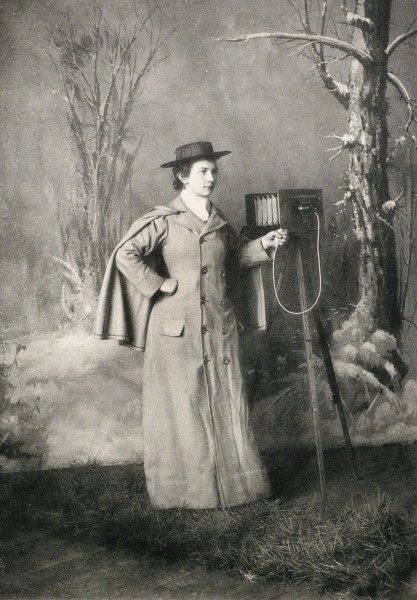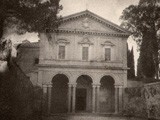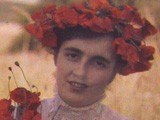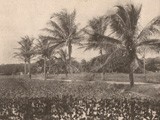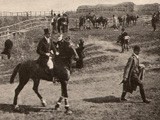A Chautauqua Student
PhotographersJuvia Johnson, Unknown
CountryUnited States
MediumCollotype
JournalThe Photographic Times: 1893: June-December
AtelierUnknown
Year1893
View Additional Information & Tags
Artists, Fashion, Hats, Photographers, Photography, Portrait: Woman, Women: Occupational
Dimensions
Image Dimensions: 17.2 x 12.1 cm | published July 21, 1893 | issue No. 618
Support Dimensions: 28.8 x 21.1 cm
Associated Blog Posts:
March of Trade's Harmonious Shades
Associated Highlights:
The Photographic Times: 1871-1915: a definitive American photographic Journal
Editorial comment on this plate:
The illustration that we present to our readers with this number of The Photographic Times is a phototype reproduction from a negative made in the winter class of the Chautauqua School of Photography.
The subject, Miss Juvia Johnson, of Meadeville, Pa., is herself a student of the school. She developed the plate, while the posing and lighting were arranged by another lady scholar. The majority of the students of last winter’s class were ladies, all making portraiture a specialty, with the object of ultimately following photography as a profession.
We may state that the majority of the Chautauquans who have been trained for professional work, are doing a fair and, in many instances, a highly prosperous and lucrative business.
It is unknown yet possible Juvia Johnson later became the well-known children’s artist at the beginning of the 20th century of the same name whose work is often seen reproduced as colored postcards.
The Chautauqua School of Photography
One of the very first schools of photography in the United States was the so-called “Chautauqua School of Photography” founded in 1886. A very dashing looking Juvia Johnson, seen here in a self-portrait with hat, smart cape in place and hand ready to squeeze the shutter of her field camera by means of a bulb release was an early student. The back story on the school is important and fascinating, opening a window to some of the very first organized photographic instruction taking place in the United States.
Professor Dr. Charles Ehrmann, (b. 1822) an employee of the Scovill manufacturing company which in 1889 became the Scovill-Adams Company in New York City-was the school’s chief instructor during its early years:
It was in 1886 that the management of the great Chautauqua University recognized the growing demand for photographic instruction, by establishing a School of Photography, in connection with its other departments, and Prof. Ehrmann was chosen as instructor of the School. (1.)
Headed by Ehrmann in the Photographic Times Publishing Association offices in New York City, early accounts in 1888 and 1891 give an idea of its’ student body and course work offered:
Most of the students belonging to the School of Photography at Chautauqua are young, ranging from the ages of twelve to twenty. The practicing classes at the Assembly Grounds number thirty-eight; in addition to that there is a corresponding class, at present, of forty-eight, while the local class in New York consists of twenty three members, making altogether probably the largest school of photography in the world. (2.)
This institution, under the guidance of Dr. Charles Ehrmann, has been very successful. At the annual meeting held early in September at Chautauqua the reports presented show that the institution is accomplishing a great deal of work. During the year instruction was given to four classes—the corresponding class, practicing class, at the Assembly grounds; the local class, in this city; and the postgraduate class. In all, 145 students derived benefit from the school. Sixty-eight of them were women. Of the 145, 91 were strictly amateurs. In the subordinate classes there were practical exercises in studio and field, photo-micrography study, and the recovery of precious metals from waste solution, while the more advanced class studied the chemistry of silver compounds and emulsion processes, the non-metallic bodies, and photo-chemical and photo-physical changes. (3.)
The Photographic Times performed the task of widely-circulated mouthpiece for the school. To this end, the “Chautauqua Department” of the Photographic Times was an occasional printed feature of the journal in the early 1890’s. In addition to his duties as chief instructor, Ehrmann was an associate editor of the Times. With editor and company president Washington Irving Adams, he co-authored a series of training manuals and instructional books on photography included as part of the school curriculum-in turn giving the parent company’s publishing arm further opportunities for increased revenue.
The inner workings of the school show a man who juggled many responsibilities. In the pages of the Times on April 18, 1890, Ehrmann writes:
The Chautauqua School of Photography, Local Class of 1889-90, after a most successful term, will close the first week of May next. The Summer Practicing Class of 1890 will open at Chautauqua on or before July 1st, and will remain in session until September 15th. This interval of time, between the closing of one and the opening of the other class, has become necessary now that the school has grown to such unexpected dimensions. Preparation for the work on the Assembly Grounds, the ending of the old school year and the commencing of the new, the marking of examination papers and graduating the members of the Corresponding Classes, the arrangements for the exhibitions, and the work of the Exchange Club, must all be attended to before the opening of the Summer School at Chautauqua. The school is proving its usefulness by constantly growing in all directions. This year promises to be more successful that even any of the previous years. (4.)
Even with student numbers approaching 150 in all classes given in any year, those actually securing diplomas from the school seems comparatively small. For the 1888-1889 graduating class, 25 names were printed in the December, 1889 issue of the Times. But this perhaps should be no surprise. The very spirit guiding Chautauqua assemblies nationally in the United States at this time, and even now, including the school’s summer home on the shores of Chautauqua Lake in upstate New York, was “intelligence for the masses.” As previously cited, many students were amateurs. Some gleaned important knowledge on technical material crucial to their becoming professionals who made their living at photography but for the majority, the empowerment of learning something new and useful was the primary motivation for attending the school.
For potentional students in the greater New York City area, the following early advertisement for the school gives a few particulars on agenda, details, etc. (from the May, 1891 issue of Sun & Shade):
INSTRUCTION DEPARTMENT
Chautauqua School of Photography.
The Largest Photographic School in the world.
Class hours from 9 to 12 every Monday and Saturday.
The skylight room and laboratory used by these classes are on the seventh floor of No. 423 Broome Street, New York. (Take elevator). Separate Classes for Ladies.
Cost of Course of Ten Lessons, including entrance fee, text book, and materials used in demonstration, $7.50.
Special Single Lessons, per hour, each $1.00
Cost of Ten Lessons in Portraiture, or special subjects, $10.00.
After completing the regular course, students are admitted to examination, and if passed, are awarded a Chautauqua diploma.
For further information address,
Prof. Charles Ehrmann, Instructor, 423 Broome St., New York.
Having the final word in this brief overview, a working philosophy on the state of photography and the importance of breaking down assigned labels was delivered by Ehrmann in his paper “Education in Photography” as part of the summer Chautauqua assembly. He said:
Let us abandon the term professional and amateur, … and if distinction must be made let us class them scientific, artistic, and technical. (5.)
Notes:
1. excerpt: biography: Charles Augustus Theodore Ehrmann: in: The Photographic Times and American Photographer: New York: May 25, 1888: p. 242
2. excerpt: Editorial Notes: in: The Photographic Times and American Photographer: New York: August 31, 1888: p. 411
3. excerpt: The Chautauqua School of Photography: in: The American Amateur Photographer: New York: October, 1891: pp. 409-410
4. excerpt: Editorial Notes: in: The Photographic Times and American Photographer: New York: April 18, 1890: pp. 183-184
5. Chautauqua Notes: in: The Photographic Times and American Photographer: New York: December, 1889: p. 432
